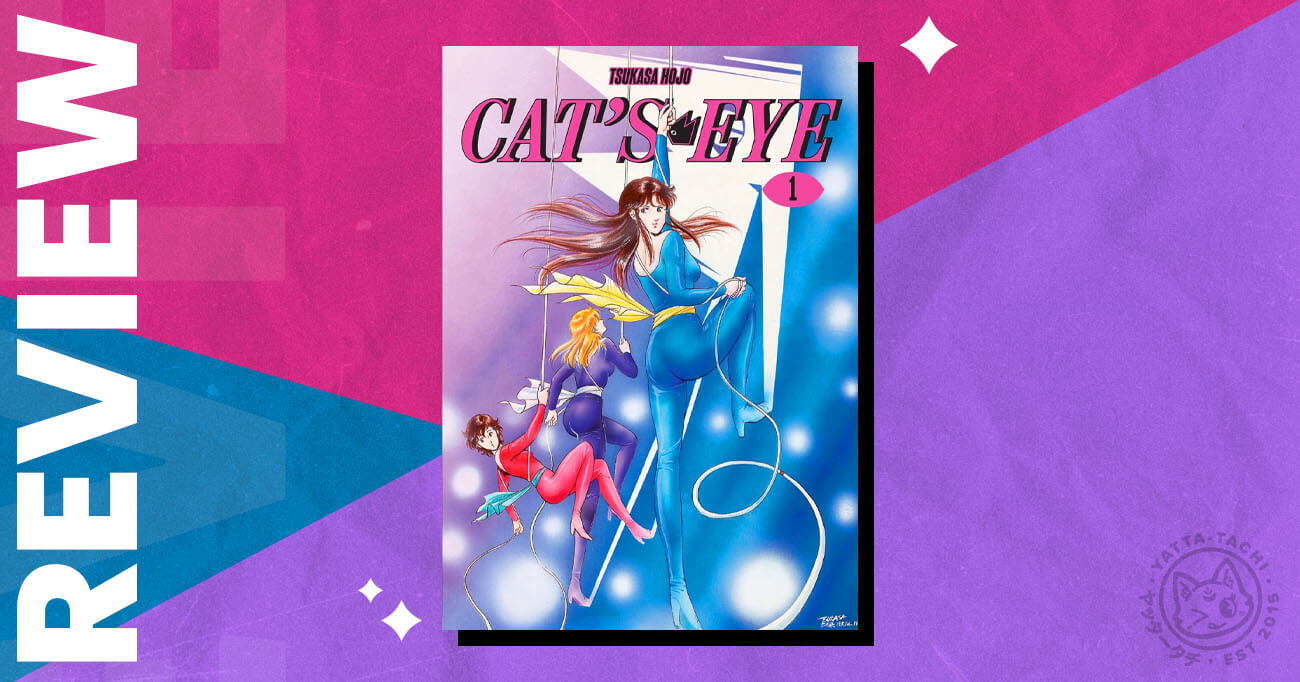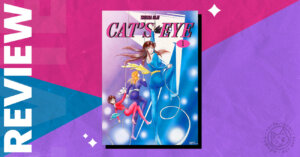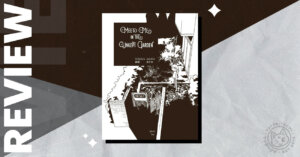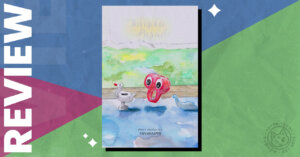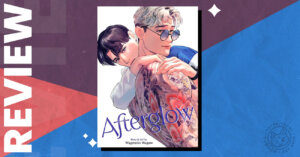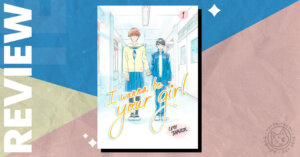Synopsis
By day, sisters Hitomi, Rui, and Ai run a cafe called Cat’s Eye. By night, they are art thieves collectively named Cat’s Eye. Policeman Toshio Utsumi is out to get them; he’s also going out with Hitomi. Will Toshio ever realize that his girlfriend is his archnemesis? Might Hitomi develop feelings for the childhood friend that she’s leading along?
Cat’s paw
Cat’s Eye was drawn by Tsukasa Hojo and published in the pages of Shonen Jump starting September 1981. At that time, Akira Toriyama was just a year into Dr. Slump’s run. Fist of the North Star, a project featuring Cat’s Eye editor Nobuhiko Horie, would not come out for another two years. Shonen Jump had not yet reached its golden age.
Hojo’s work pushed the magazine in new directions. It stars three women drawn wearing skintight outfits and realistic proportions. Sure, it’s a decision made for maximum sex appeal. But it’s also a step away from cartoon abstraction and towards increased detail. The best parts of Cat’s Eye have the flow of a movie or television series, rather than a manga.
The comic’s formula riffs on earlier heist series like Lupin III (1967). Every chapter, the Cat’s Eye crew go out and steal something despite Utsumi’s best efforts. There are some fun setpieces, like a tightrope walk across skyscrapers that ends with a goofy anticlimax. Still, I was surprised by just how interchangeable many of these cases felt to me. They are more excuses for the characters to do things together than functional heist stories.
Cat’s heart
The true heart of Cat’s Eye is the relationship between Toshio and Hitomi. Toshio is such a goofball that he leaks confidential police info to Hitomi without thinking about it. Hitomi, on the other hand, becomes murderously jealous whenever she sees Toshio out with another woman. So Cat’s Eye is really a best friends to lovers (or are they enemies?) romance with heists as a side dish.
The chapter “Do You Like Blondes?” demonstrates just what the series can do when all its ingredients are mixed correctly. Toshio is showing Henriette le Vert, Chair of the French Federation of Modern Art, around town. At first, Hitomi lashes out because she thinks that Toshio is cheating on her. But then she discovers that le Vert is an imposter: in reality, she’s the Bride of Lupin, a crooked thief looking to frame Cat’s Eye for her own theft. Cat’s Eye runs away with Bride of Lupin’s quarry, and Toshio sleuths her true identity. All’s well that ends well in love and war.
Cat’s Eye’s focus on relationships set it apart from the likes of Lupin III. Every character in the latter is a cartoon; Lupin is shameless, Zenigata is inflexible, Jigen is cool, and Fujiko is a femme fatale. Hitomi and her sisters, by comparison, are more like human actors in movies or television shows. Still larger than life, but relatable, or at least aspirational. They even screw up cases sometimes!
Cat’s leg
Still, I think there’s something missing in this first volume of Cat’s Eye. You need strong characters for a good procedural, and Hojo has trouble differentiating the sisters in this first volume. Rui, in particular, doesn’t have much of a personality. Ai is better, but then the only story that Hojo can think of for her chapter is rerunning Hitomi’s relationship with Toshio. The best procedural stories are such that you can put any two characters together and imagine them doing something interesting. Cat’s Eye isn’t there yet.
As of the first volume, Cat’s Eye isn’t a particularly good action series, either. Hojo is great at drawing poses and facial expressions, but is still figuring out how to convey natural movement on the page. This is a problem considering that comics about stealing things require you to be good at drawing people getting in and out of trouble. Hojo’s realistic and detailed character illustrations have their own drawbacks in that respect.
Cat’s city
Cat’s Eye was published before City Hunter, Tsukasa Hojo’s longest running series (so long as we don’t combine both seasons of Angel Heart). I suspect that City Hunter was conceived from the bottom up to rectify the flaws in Cat’s Eye. The protagonist, Ryo Saeba, is a “sweeper” who does odd jobs, letting Hojo tell any kind of story he wants instead of having to think up new heists every week. Shrinking down the main cast from four to two also allows for a tighter focus on romance.
Even so, Cat’s Eye’s high concept premise of thief sisters effortlessly clowning on cops is just going to be more appealing to some people. And why not? The aesthetic of Cat’s Eye (the costumes, the calling card, the 80s of it all) is super cool. I can understand why the series became a success and bought Hojo a chance to evolve his craft further.
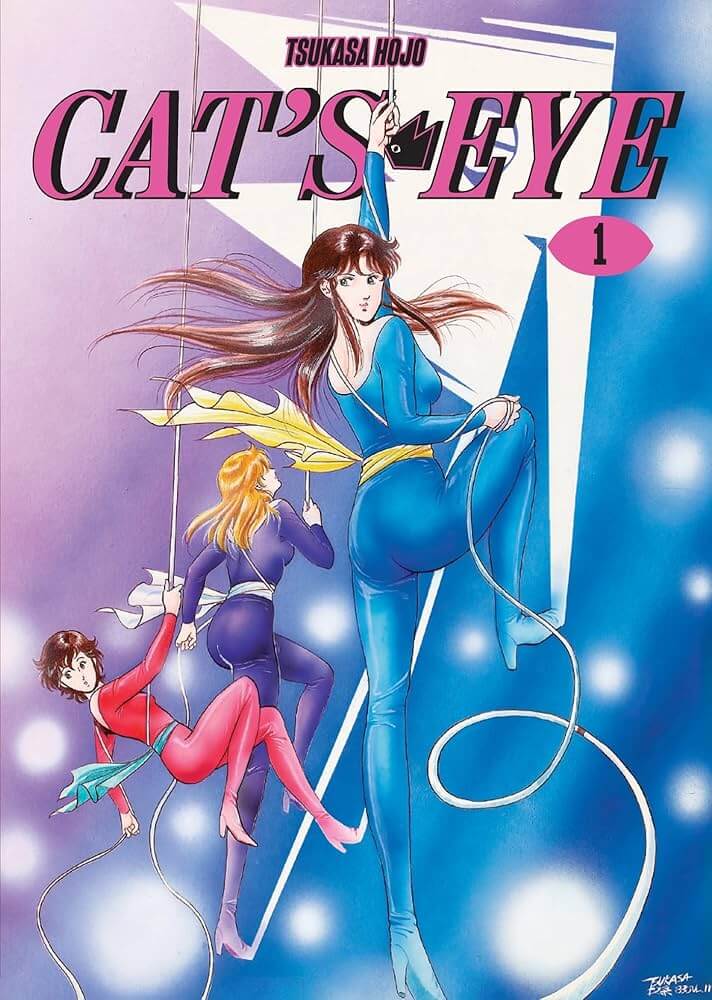
Verdict
The first volume of Cat’s Eye is a fair slice of stylish 80s romantic comedy with strong character designs. I’m less convinced regarding its plotting and character work, qualities that are crucial for the kind of case-based stories that Hojo wants to draw. Whether or not future volumes improve in this respect will determine whether Cat’s Eye is a worthy read in its own right or just a stepping stone to Hojo’s later masterpieces.
Cat’s Eye Volume 1 is available to buy on Bookshop, Barnes & Noble, Kana’s Store, and Amazon.
If you like Cat’s Eye Omnibus Volume 1, you might also like…
- City Hunter by Tsukasa Hojo
- Lupin III: Greatest Heists by Monkey Punch
- Bandette by Paul Tobin and Colleen Coover
Credits
Story and Art: Tsukasa Hojo
Translation: Andrew Charles Love
Retouching: David Moreno
Lettering: Bari Shrager
Published in English by Kana
Thank you to Kana for providing a review copy. Receiving this copy did not affect the reviewer’s opinions as expressed here.
Article edited by: Anne Estrada

Featured Sponsor - JAST
The sweetest romance and the darkest corruption, the biggest titles and the indie darlings; for visual novels and eroge, there's nowhere better.
Big thank you to our supporters
From their continous support, we are able to pay our team for their time and hard work on the site.
We have a Thank-You page dedicated to those who help us continue the work that we’ve been doing.
See our thank you page